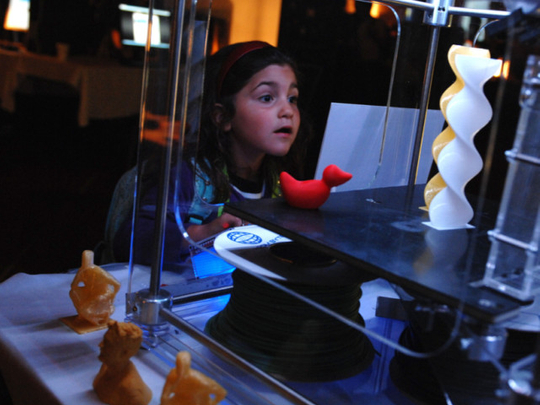
The US President is in on the secret. Last month Barack Obama stated that 3D printing had the potential to revolutionise the way we make almost everything. As a part of his state of the union address, Obama acknowledged that 3D printing would be the technology that would soon revive the long-suffering US manufacturing sector.
With the worldwide stage set, let’s take a look closer home — and the sight is groundbreaking. Early adopters in the UAE have already witnessed the massive potential of 3D printing. And over the course of this year, many more will.
“I would have never expected that the number of people longing for 3D printing in Dubai is so big. It’s huge!” says Lothar Hohmann, Managing Director of Precise and the man behind TIM (This Is Me), a personalised 3D avatar of yourself. “3D printing is going to be the next industrial revolution. What we are doing right now is unbelievable, so you can imagine the potential of the technology over the next few years.”
Mass adoption
Jamal Maraqa, Managing Director of Protech Dubai, an IT solutions provider in the region, estimates that we will start seeing 3D printers regularly in 2014, with everyone in the UAE having adopted personal 3D printing technology by 2016. “The regional interest in three-dimensional printing began two to three years ago when educational institutes began looking into this technology for academic purposes. It was at that time when we started getting involved with 3D printing,” says Maraqa.
The requirement from education providers led Protech to enter a partnership with 3D Systems, a global provider of 3D content-to-print solutions and production 3D printers, through an existing supplier. “We started supplying to education institutes where they used it for their students’ designs. This was a few years ago when this technology was extremely expensive and not commercially available for end users,” says Maraqa.
A far cry from that scenario, at the last Gulf Information Technology Exhibition, Protech launched the first personal 3D printer in the region for Dh5,900.
“The Cube personal 3D printer was another revolution and we are happy to be the first to introduce it to the Middle East. Despite the technology being around for the past few years, the personalisation and ease of use is new,” says Maraqa.
If users have a basic knowledge of 3D design, they can use the printers with ease. In their quest to make 3D printing available to everyone, most manufacturers have introduced a system that makes it easier.
Downloadable templates
Websites such as Thingiverse.com, Shapeways.com and Cubify.com have begun hosting downloadable 3D designs and templates.
Speaking about the content available, Maraqa says, “You can download the files, make minor changes in order to personalise it the way you want and print it out at home. For example, you can download jewellery templates, make bracelets and rings and print it at home.” Everyone’s a designer now.
And it gets better. If, for example, you are looking for a new pair of glasses and cannot find the right pair, you can download a template from these sites, custom-make a pair to your personal style and print it at home. You can then get your lenses fitted at any optician.
The new printers use several materials. Instead of Conqueror bond paper, the names rolling off your tongue are going to be polycarbonate, polylactide and polyphenylsulfone. The 3D Cube printer in Dubai uses a terpolymer called acrylonitrile butadiene styrene (ABS), a kind of plastic. Using ABS is becoming the safest way to print in 3D. Protech stocks 14 different colours of cartridges for the Cube printer. Each cartridge costs $50 (about Dh183), and can print about 15 objects of five to six cubic centimetres in size.
“I think this is the future. If you look at it today people are using 3D printers to develop prototypes or models. In the future people will start using 3D printers to produce things commercially,” says Maraqa.
Hohmann believes that personal 3D printers will begin to gain fame when companies and designers start creating content relevant to 3D printing. “Dubai has a lot of creativity. There is a huge scope for artists here.”
Precise welcomes interns or anyone with a revolutionary idea related to 3D printing. “I am looking for creative minds in this part of the world,” Hohmann says. “They might have their own creative ideas and are looking for somewhere to develop these ideas. If we can help create a business model out of their ideas, they are more than welcome at our offices. What we need to do is educate and spread awareness in the region. I want to be the platform for the designers while creating content for the next generation to grow up with.”
How long would it take for 3D printers to be found in every home in the UAE? Hohmann says, “I’m not Bill Gates, who spoke about a desktop computer in every house. However, the computer would not have developed without the internet. With the arrival of the internet, computers went mainstream and that is the same for 3D printers and available content. Once the content is readily available, the mass adoption of 3D printers will follow.
“As I said before this is the next industrial revolution. Like with so many other technologies, it is first available to the military, then James Bond movies and then at some stage for normal people like us.”
2013 is certainly shaping up to be the year that paves the way for 3D printing. And when it does arrive, no part of any industry is going to remain untouched.













